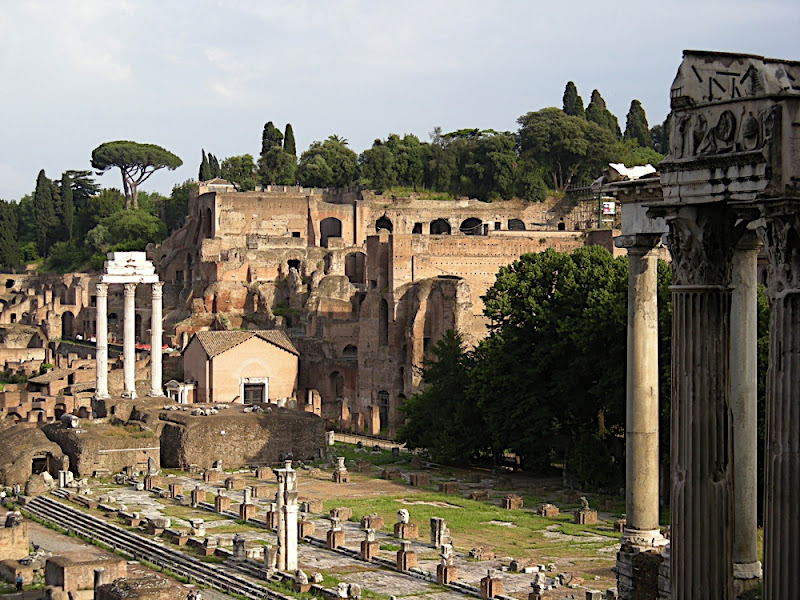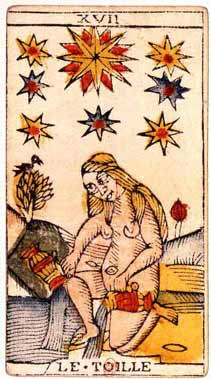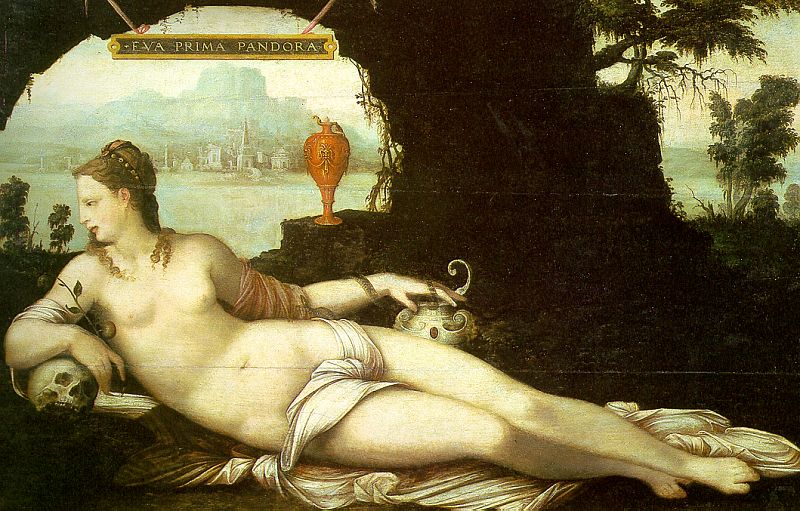http://www.theoi.com/Text/FulgentiusMyt ... s1.html#11
The question is naturally: Who is Pollus? Usually the father of the mentioned 4 gods is Uranos.The name of the son of Pollus, and the husband of Ops, is Saturn, an elderly man, with his head covered, carrying a scythe. His manhood was cut off and, thrown into the sea, gave birth to Venus. Let us then hear how Philosophy interprets this. She says thus: Saturn first secured dominion in Italy; and seizing people for his harvest prerogative, he was named Saturn, for glutting (saturando). Also his wife is named Ops because she brought help (opem) to the hungry. He is the son of Pollus, either for his heavy strength (pollendo) of from the wealth of high living (pollucibilitate), which we call the human state. Whence Plautus in the comedy Epidicus says: “Drink up, we live as sumptuously (pollucibiliter) as the Greeks.” He is depicted with head covered because all crops with their cover of leaves are protected in a shady enclosure. He is reported as having devoured his own sons because every season devours what it produces; and for good reason he carries a scythe, either because every season turns back on itself like the curved blades of scythes or on account of the crops; whence also he is said to have been castrated, because all the strength of crops is cut down and cast into the fluids of the belly as into the sea, just as Venus is produced from these circumstances because they necessarily produce lust. Apollophanes also in his epic poem writes that Saturn is for sacrum nun, because nus in greek means sense, or for satorem nun, as for he divine intelligence as it creates all things. Along with him they add four other children, that is first Jove, second Juno, third Neptune, fourth Pluto. Pollus they explain as poli filium, the father of the four elements.
The answer came by this impression:

In Rome had been a very big Saturn temple and very near to it a very big Castor and Pollux temple.
Following the lines of usual research ... checking information about Fulgentius
http://en.wikipedia.org/wiki/Fabius_Pla ... Fulgentius
and checking information about Castor and PolluxVery little is known about the life of Fulgentius other than the few references he makes to himself in his own works. His style of Latin, knowledge of Greek, and his view on classical authors and cults suggests that he was likely educated in colonial North Africa.[2] Other references to African culture in his work support placing him in this region, clearly before the Muslim invasions of the 7th century. Moreover, his apparent knowledge of the Libyco-Berber language and script indicates that he was probably an ethnic African, with him referring to the language in his On the Ages of the World and of Man as being part of his 'own' heritage.
http://en.wikipedia.org/wiki/Castor_and_Pollux
S, it's logical, somehow in the relevant time of Fulgentius the Cult of Castor and Pollux was still strong in North Africa.Even after the rise of Christianity, the Dioskouroi continued to be venerated. The fifth-century pope Gelasius I attested to the presence of a "cult of Castores" that the people did not want to abandon. In some instances, the twins appear to have simply been absorbed into a Christian framework; thus fourth-century AD pottery and carvings from North Africa depict the Dioskouroi alongside the Twelve Apostles, the Raising of Lazarus or with Saint Peter. The church took an ambivalent attitude, rejecting the immortality of the Dioskouroi but seeking to replace them with equivalent Christian pairs. Saints Peter and Paul were thus adopted in place of the Dioskouroi as patrons of travellers, and Saints Cosmas and Damian took over their function as healers. Some have also associated Saints Speusippus, Eleusippus, and Melapsippus with the Dioskouroi.
Now for Fulgentius the following is stated:
With no doubt Fulgentius' concept of mythology ... rather different from Hesiod's interpretation ... was influential, it more or less definitely influenced the people, who made Tarot and similar things, for instance Lazzarelli (and the Mantegna Tarocchi), who used the row of the Muses of Fulgentius instead of two other rows, which also were known in this time.Fulgentius’ work is said to mark the transition from late-antique to Medieval literary study.[38] After a period of decreased interest in the literature, the practice of mythography was picked up again in what is thought to be the 7th century by the so-called Vatican Mythographers. All three writers borrow Fulgentius’ methods in order to search the classical myths for obscured meaning. However, it was during the Carolingian period, from the 8th through to the 10th centuries, that Fulgentius’ work reached the height of its popularity. He came to be admired as one of the founding fathers of mythographic writing, as well as being praised for bringing classical pagan literature in line with Christian teachings. Along with this renewed admiration of his writings came a series of Fulgentian-inspired literary commentaries. The practice of differentiating between the author’s intention and the deeper meaning of a piece of literature as carried to the extreme by Fulgentius seemed to provide the framework for the commentaries of this period. The Mythologies in particular proved to be an essential storehouse of resources for the Medieval commentators who carried on his tradition of discussing classical poetry in moral terms. Furthermore, his exotic language and use of rare words seemed to influence the writing style of a number of poets throughout the Middle Ages.
Fulgentius’ manuscripts date as far back as the early 8th century. As a testament to his popularity, a copy of Mythologies may have been available in England as early as the 9th century. Fulgentius remained a standard part of collections of antique mythology up until the 19th century, at which time his work began to come under popular criticism as being absurd and factually unreliable.
http://trionfi.com/0/m/11
************
Now today, with the reflection of mikeh's work about "Tarot-like images in a c.1420 manuscript" ... this was here ...
viewtopic.php?f=11&t=655&start=10
...
seeing this "Pollus" in the writing of Fulgentius and getting the meaning of this I exploded with thhis ...
... as this a new insight with some surprizing character I considered it necessary to open a new thread.And here we have the answer to some good old Tarot questions ..
Why is 35 Gemini the highest numbered trump below the 5 Aries in Minchiate?
I guess, this is answered now. Gemini shows Castor and Pollux.
Also the question of the wedding between Costanzo Sforza and Camilla d'Aragon in 1475. Why did Castor and Pollux got such a preferred position in the festivity?
viewtopic.php?f=11&t=418&hilit=camilla+aragon
... somehow in this thread
And for the Minchiate and Pollus as father of the elements:
36-40 Aries (usual Tarot elements)
24-35 Zodiac with reigning Gemini
20-23 elements
16-19 four additional virtues
1-15 usual Tarot elements till lightning.
And the problem appears also in the analyzes of the Lorenzo Spirito text:
search.php?t=442
... and we have a general twin-pairing models in the 15th century, which appears in Sola-Busca, Boiardo Tarocchi, also in biographical presentations.

So ... Why ?
Why had been the twins the "highest numbered cards". The influence of Fulgentius seems to be the answer, but a lot of more work is necessary to get this finished.







